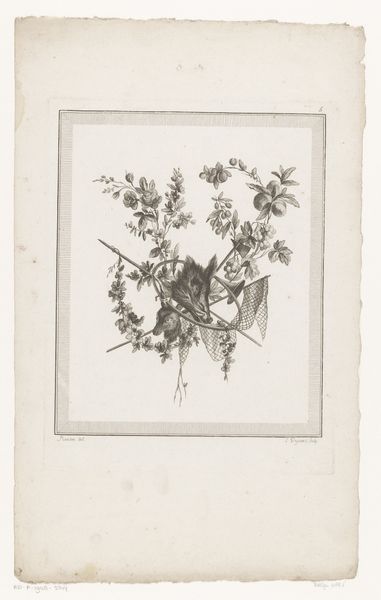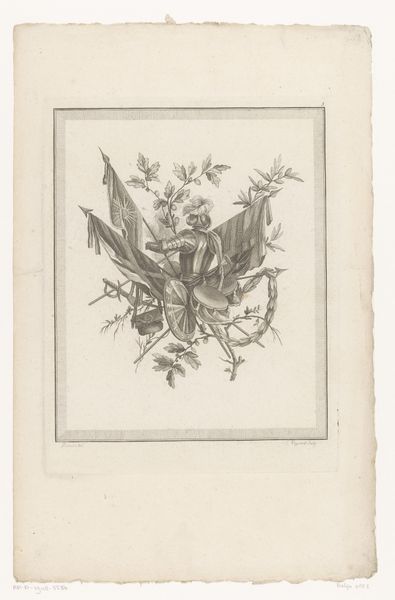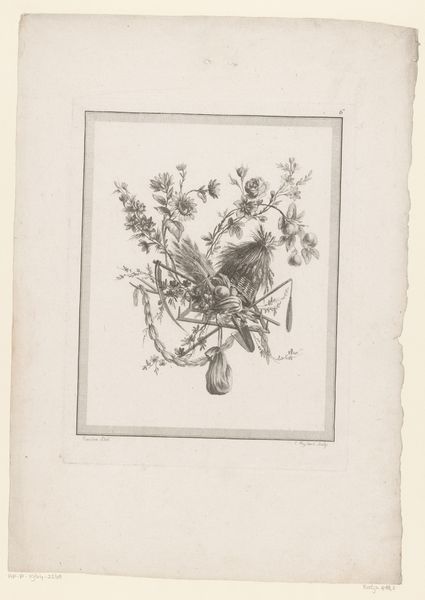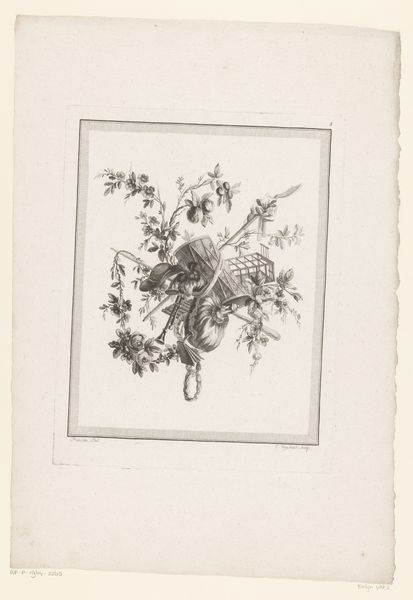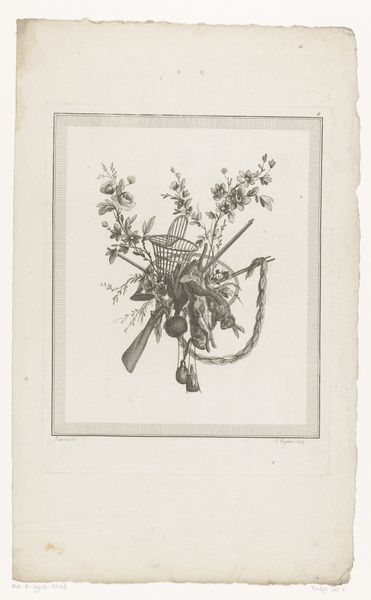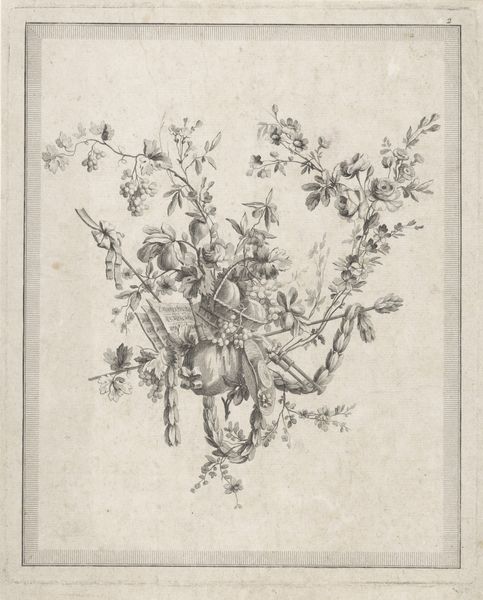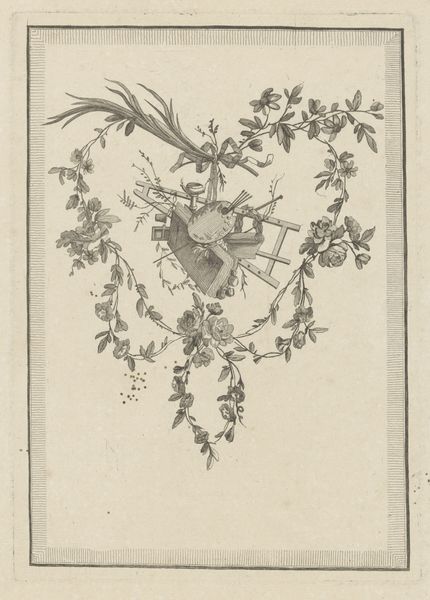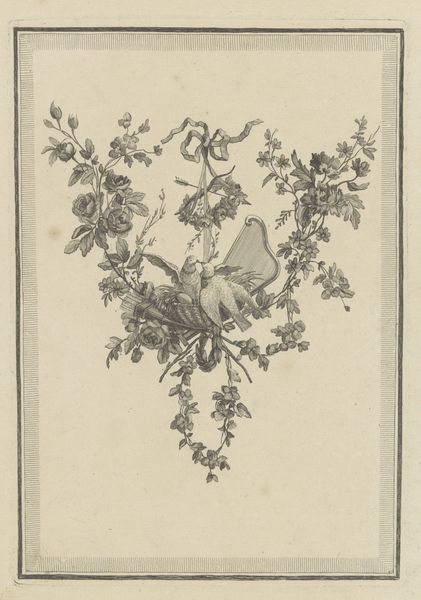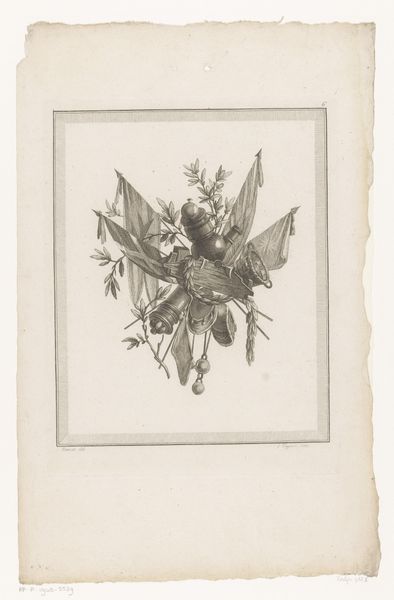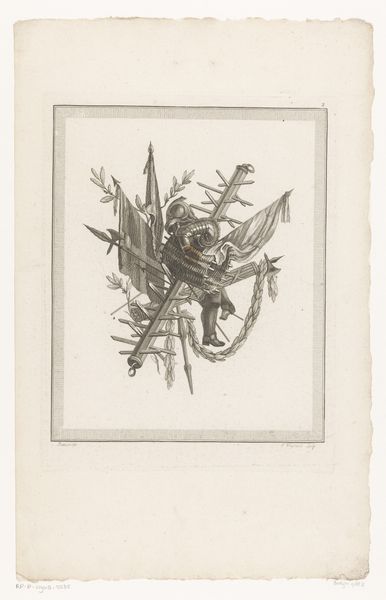
Dimensions: height 282 mm, width 219 mm
Copyright: Rijks Museum: Open Domain
Editor: This is "Jachttrofee," a print made by Etienne Claude Voysard in 1778, currently held at the Rijksmuseum. It’s an etching and engraving depicting a hunting trophy—birds amidst foliage, musical instruments, and netting. It feels very symbolic. What do you see in this piece? Curator: It presents a fascinating intersection of nature and culture, wouldn't you agree? The arrangement itself echoes the Baroque's love for dramatic presentation, but notice how Voysard combines symbols of life – the birds, the flowers – with objects associated with death and dominance – the hunting net, the idea of the "trophy" itself. The musical instruments, though, they bring in another layer – perhaps the refinement of courtly life, the leisure afforded by successful hunts. Editor: So, it’s more than just a decorative piece, it tells a story. Curator: Indeed! Think of the cultural memory embedded here. Hunting wasn’t merely about sustenance; it was a ritual, a demonstration of power. The specific birds depicted, what do they evoke for you? The rose is commonly understood, but do you notice other plant-life depicted? Are they all innocent decorations, or something more? Editor: Hmm… I guess I assumed it was decorative. Are you suggesting they were intentionally selected to reinforce the themes of the hunt or power? Curator: Absolutely. Even the seemingly innocuous musical instruments might point to the social context of the hunt - celebration and status. What does the Baroque style do for these items? Does the implied power feel masculine or feminine? Editor: It does feel overtly masculine. Learning about these hidden meanings has really enriched my understanding. Thank you. Curator: My pleasure. Recognizing how symbols communicate complex ideas makes art from any era come alive, don't you think?
Comments
No comments
Be the first to comment and join the conversation on the ultimate creative platform.
